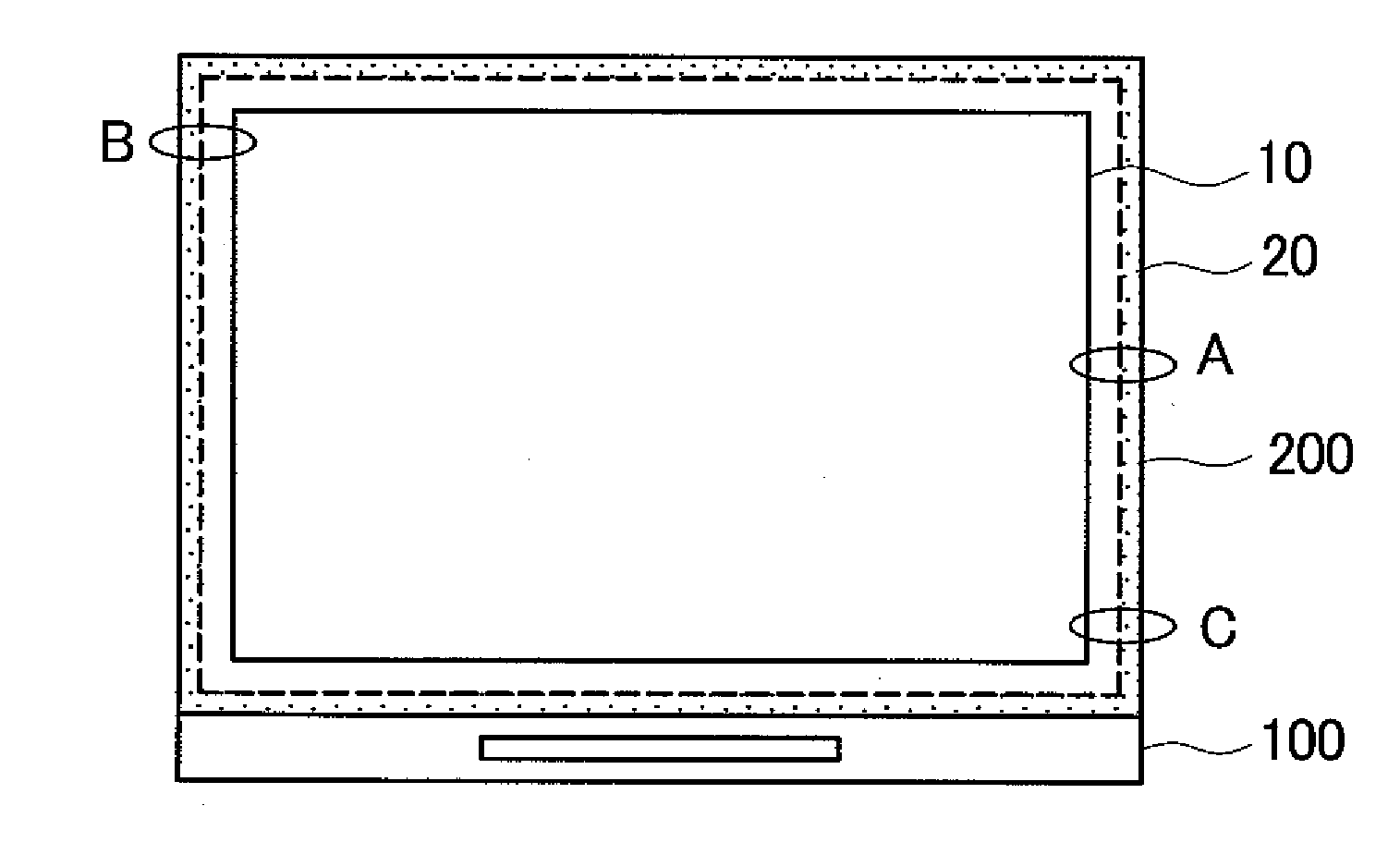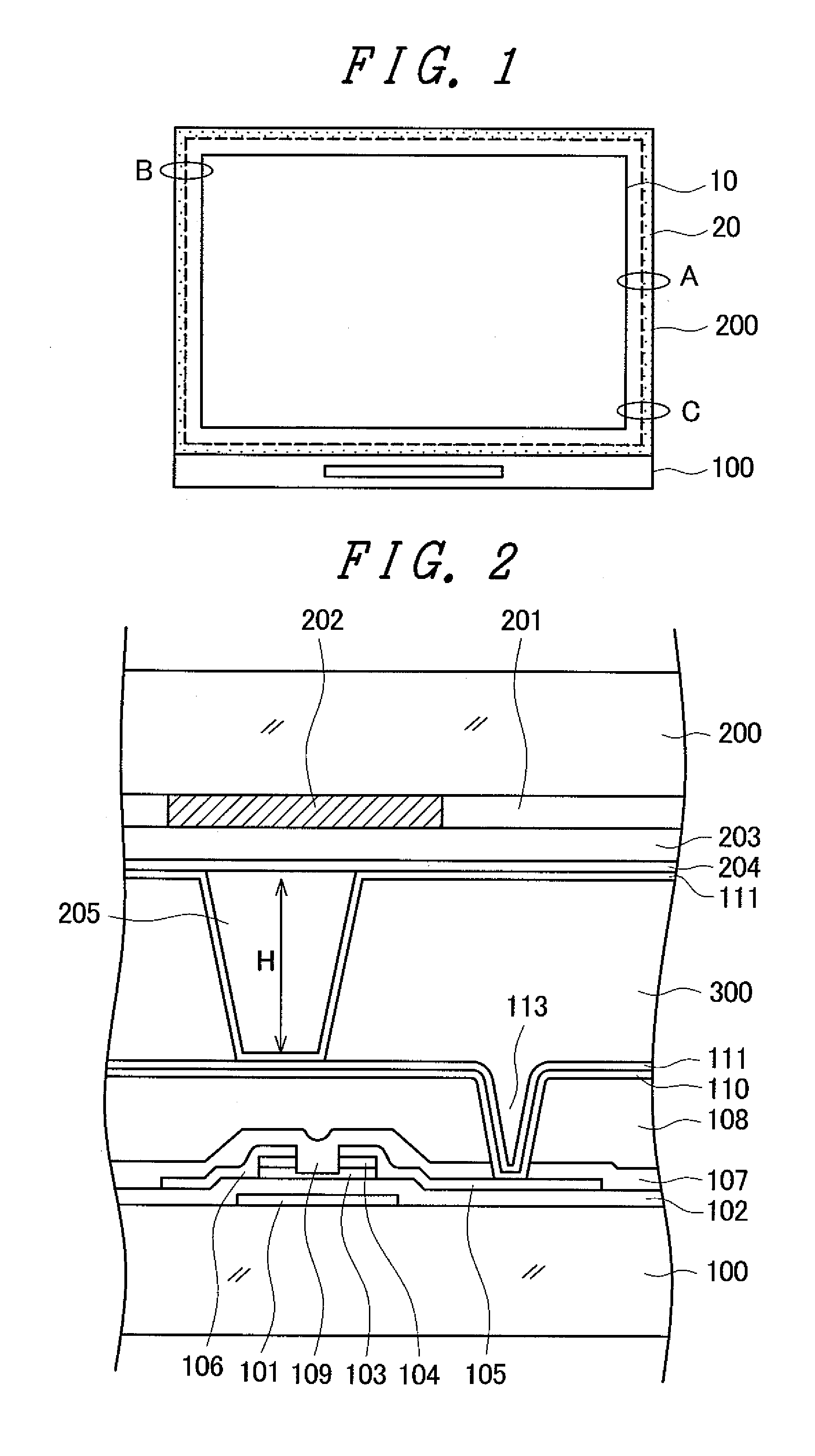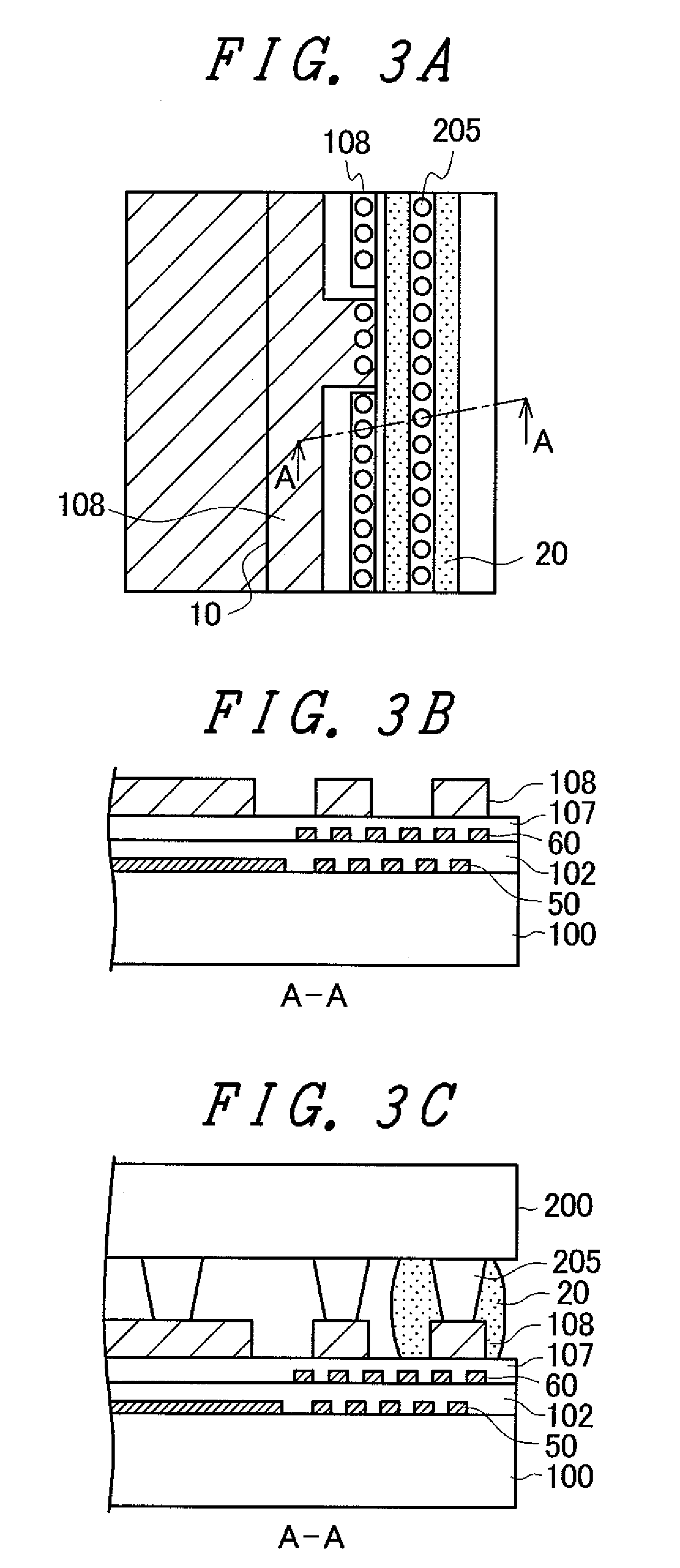Liquid crystal display device
- Summary
- Abstract
- Description
- Claims
- Application Information
AI Technical Summary
Benefits of technology
Problems solved by technology
Method used
Image
Examples
embodiment 1
[0081]FIG. 1 is a plan view of a liquid crystal display panel according to the invention. FIG. 1 shows a small liquid crystal display panel used for a DSC (Digital Still Camera) or the like. In the liquid crystal display panel, a TFT substrate 100 having pixels formed in a matrix and a counter substrate 200 having color filters formed thereon are bonded together via a sealing material 20 at the peripheries of the substrates. The TFT substrate 100 is formed larger than the counter substrate 200. On a portion of the TFT substrate 100 where the TFT substrate 100 is larger than the counter substrate, an IC driver 30 is arranged and a terminal portion is formed.
[0082]In FIG. 1, scanning lines extend in the lateral direction on the TFT substrate 100 and routed around to the terminal portion side via scanning line lead wires on both sides of the TFT substrate. Since a frame portion outside a display region has a small width, the scanning line lead wires are formed as two-layer wiring. The ...
embodiment 2
[0132]In Embodiment 1, the TN type liquid crystal display device, which is most typical, has been described. However, the invention is not limited to the TN type liquid crystal display device but can be applied to other types. An IPS (In Plane Switching) type liquid crystal display device controls light by rotating liquid crystal molecules 301 in the horizontal direction with a lateral electric field and has excellent viewing angle characteristics.
[0133]FIG. 16 is a cross-sectional view of the display region 10 of an IPS type liquid crystal display device. Only different portions from the configuration of the typical liquid crystal display device described with reference to FIG. 2 will be described. In FIG. 16, a TFT is formed on the TFT substrate 100, and the organic passivation film 108 is formed on the inorganic passivation film 107, similarly to FIG. 2. An n+Si layer is formed on the semiconductor layer 103, but the n+Si layer is omitted in FIG. 16.
[0134]In FIG. 16, the counter ...
embodiment 3
[0147]Embodiments 1 and 2 show the examples where the organic passivation film 108 is formed on the inorganic passivation film 107. Some liquid crystal display devices use only the inorganic passivation film 107 as a protective film for a TFT without using the organic passivation film 108. The invention can also be applied to such a case.
[0148]FIG. 24 is a schematic cross-sectional view of the seal portion in Embodiment 3. In FIG. 24, the column spacer 205 is formed in the seal portion, so that the column spacer 205 defines the gap between the TFT substrate 100 and the counter substrate 200 in the seal portion. Accordingly, the same gap as that in the display region 10 can be maintained.
[0149]In FIG. 24, glass fibers are not dispersed in the sealing material 20. Therefore, even when the two-layer wiring of the first scanning line lead wires 50 and the second scanning line lead wires 60 is formed in the seal portion, the inorganic passivation film 107, the gate insulating film 102, t...
PUM
 Login to View More
Login to View More Abstract
Description
Claims
Application Information
 Login to View More
Login to View More - R&D
- Intellectual Property
- Life Sciences
- Materials
- Tech Scout
- Unparalleled Data Quality
- Higher Quality Content
- 60% Fewer Hallucinations
Browse by: Latest US Patents, China's latest patents, Technical Efficacy Thesaurus, Application Domain, Technology Topic, Popular Technical Reports.
© 2025 PatSnap. All rights reserved.Legal|Privacy policy|Modern Slavery Act Transparency Statement|Sitemap|About US| Contact US: help@patsnap.com



